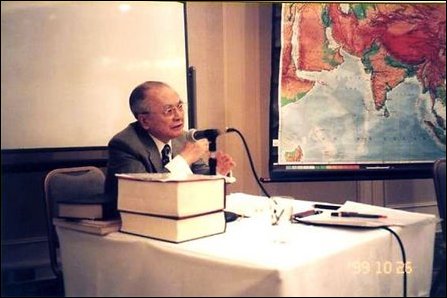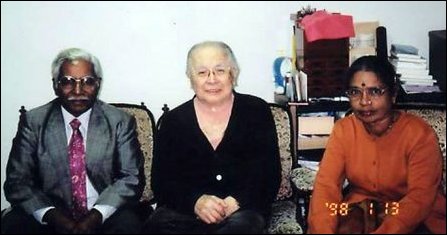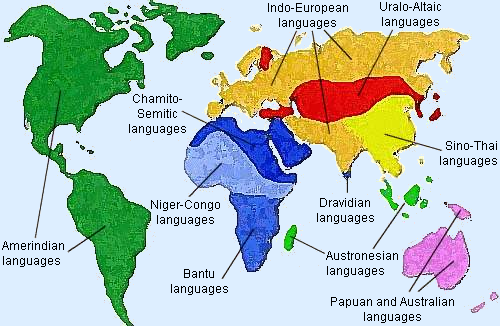January is Tamil Heritage Month. To mark this occasion, TamilCulture Magazine will publish a series of articles on Tamil history and heritage. Today’s article reflects on scholarly research that suggests a link between Tamil and Japanese languages.
Japan has always had an unusual fixation with Tamil culture. The 1995 Kollywood blockbuster Muthu and 2010’s Endhiran were huge hits in Japan. Actor Rajnikanth has a large cult following among Japanese film fans. But scholarly research suggests the links between the two seemingly disparate languages and cultures may be more than superficial.
In 1981, Japanese Professor Susumu Ono gained recognition for his provocative hypothesis of an ancient link between Japanese and Tamil languages. Born in 1919, Ono graduated from the University of Tokyo in 1943. Recognized as one of the foremost linguists in Japan, Ono was Professor of Linguistics at Gakushuin University in Tokyo.
In his research, Professor Ono asserted that both Tamil and Japanese share a common ancestry. Ono’s Tamil-Japanese studies compared linguistics, sounds, words, grammar, literature, as well as archaeology and folklore. To substantiate his theories, Ono researched the Yayoi burials of Japan with the Megalithic burials of South India and Sri Lanka (1300 BCE – 300 CE). This study revealed remarkable similarities in pottery, burial habits and graffiti marks between the two cultures.

At a lecture delivered at the 5th International Conference Seminar of Tamil Studies in Madurai, Professor Ono asserted “Haven’t you ignored the path Tamil language traversed in the East direction towards Japan?” In his address, Ono stated:
“There is a strong probability for the existence of a relationship between Tamil and Japanese. In order to prove this, it is necessary to present a long list of corresponding words strictly supported by sound laws to clarify grammatical similarities between both languages …
… the Japanese language is an agglutinative language, as is the Tamil language. In Japanese, the adjective comes before the noun and the adverb before the verb. The object also comes before the verb. Japanese use post-positions and auxiliary verbs. The Japanese nouns, adjectives and verbs have no plural declension… There are several more points to be compared grammatically between these languages, but I should like to hold off these points till I have made progress in the study of classical Tamil.
This time I shall deal only with word correspondences. My source for the Tamil words is Burrow and Emeneau’s A Dravidian Etymological Dictionary. I have tried to confirm the meanings of the words which I picked up from this dictionary with the help of a few informants in Tamil Nadu. I have taken up a total of 500 words whose correspondences with Japanese words seem to be supported by sound laws. The informants understood 70% of the 500 Tamil words in total and explained the meanings to me.”
In 1985, Ono co-authored Worldview and Rituals among Japanese and Tamils with Professor Arunasalam Sanmugadas and his wife, Professor Manonmani Sanmugadas, both linguists at the University of Jaffna.

Below are some remarkable commonalities between Tamil and Japanese:
Vowel & Consonant Order
Japanese and Tamil share a nearly identical set of vowels (a, i, u, e, o). All of these vowels have both a short and long form.
Tamil consonant order:
k, c, t(retroflex), t2(dental), p, r, [nasal set: ng, ny, n(retroflex), n (terminal), m, n2], y, r2 (retroflex), l (dental), v, zh (retroflex), l2 (retroflex)
Japanese “Kana” consonant order:
k, s, t2 (dental), [nasal, n], h(p)*[I], [nasal, m], y, r2(also l2, retroflex?), w, [nasal, n (terminal)]
Furthermore, both Tamil and Japanese have two different nasal ‘n’ sounds, one of which never ends a word and one of which never begins a word. Also, Tamil does not have arbitrary consonant combinations (unlike English). The only valid consonant combinations are (i) the same consonant repeated or (ii) the ‘n’ + consonant combination. The same is true of Japanese!
Word Order
Tamil and Japanese have similar word order. Both Tamil and Japanese follow SOV (Subject-Object-Verb) order. English follows SVO (Subject-Verb-Object) order.
Example 1
Consider the sentence:
I gave the cat food.
In Tamil this would be:
Poonai-irkku unavupporul-ai kodutthen.
Corresponding English words in Tamil word-order:
[cat {indirect object marker} food {direct object marker} gave]
In Japanese this would be:
Neko ni tabemono wo yarimashita.
Corresponding English words in Japanese word-order:
[cat {indirect object marker} food {direct object marker} gave]
Note that while English differs significantly in word order, Tamil and Japanese are in direct correspondence!

Example 2
Now let’s look at a more complicated example. Consider the following sentence:
Mike raised the cat that chased the mouse that ate the cheese that was rotten.
In Tamil this would be:
Mike valarttha poonai thuratthiya eli pusittha cheesu oosi irundadu.
Corresponding English words in Tamil word-order:
[Mike raised [cat chased [mouse eaten [cheese bad was]]]]
In Japanese this would be:
マイクがかったねこがおいかけたねずみがたべたチーズはくさっていた。
Mike ga katta neko ga oikaketa nezumi ga tabeta cheesu wa kusatte ita.
Corresponding English words in Japanese word-order:
[Mike raised [cat chased [mouse eaten [cheese bad was]]]]
Tamil and Japanese are identical!
So how did this linguistic relationship between Tamil and Japanese arise?
Japanese is a relative of the Ural-Altaic language family. Other languages in this group include Korean, Mongolian, and more distantly, Hungarian, Turkish, Estonian and Finnish. There is speculation that Dravidian may also be related to the Uralic-Altaic languages.
One hypothesis is that there was once a proto Uralic-Altaic-Japonic-Dravidian language widespread across Europe and Asia. The rapid spread of Indo-European languages led to these languages being completely replaced across large swathes of Europe and Asia. Isolated from each other, these languages – including Tamil and Japanese – resisted replacement and gradually evolved independently into their current form.

An alternate hypothesis suggests that Japanese and Dravidian peoples interacted sometime before recorded history. “There are more than 500 Tamil words in Japanese,” claims Tsutomu Kambe, a retired Japanese professor at the University of Tokyo.
Irrespective of the cause of this linguistic relationship, the existence of such commonalities between two seemingly disparate languages separated by seas and thousands of miles is astonishing.
To learn more, check out www.japanese-dravidian.blogspot.ca.

 Sen
Sen









